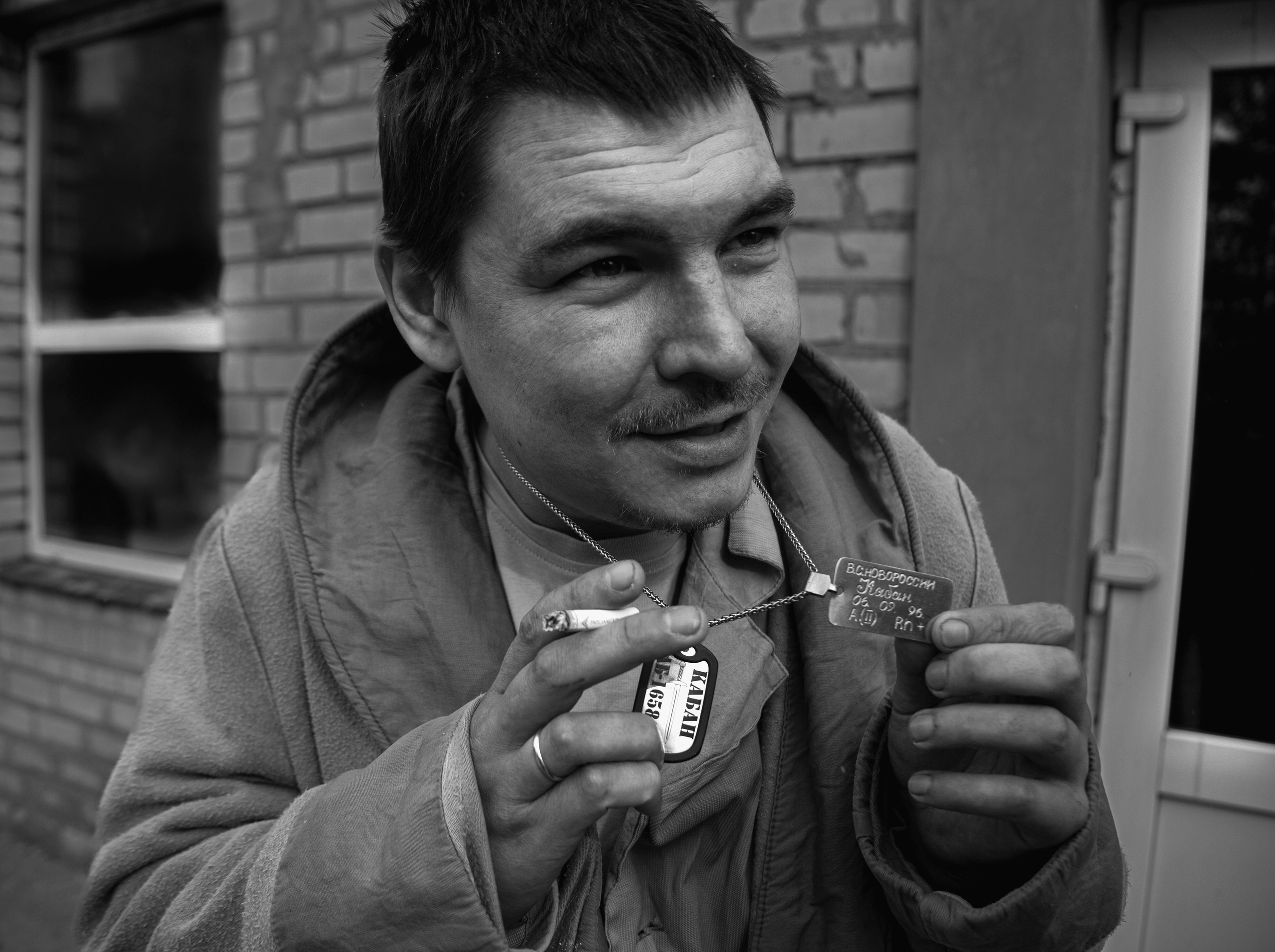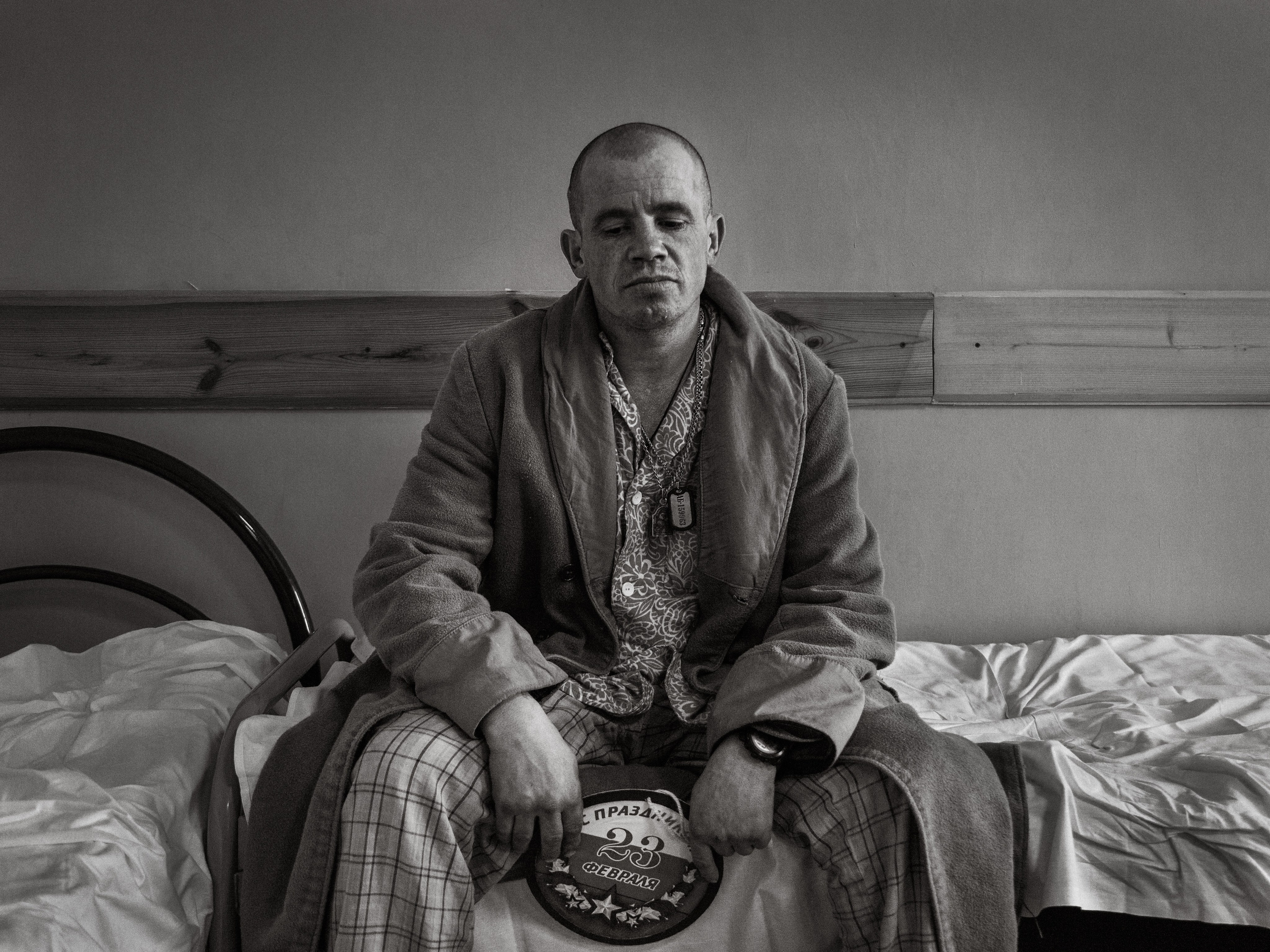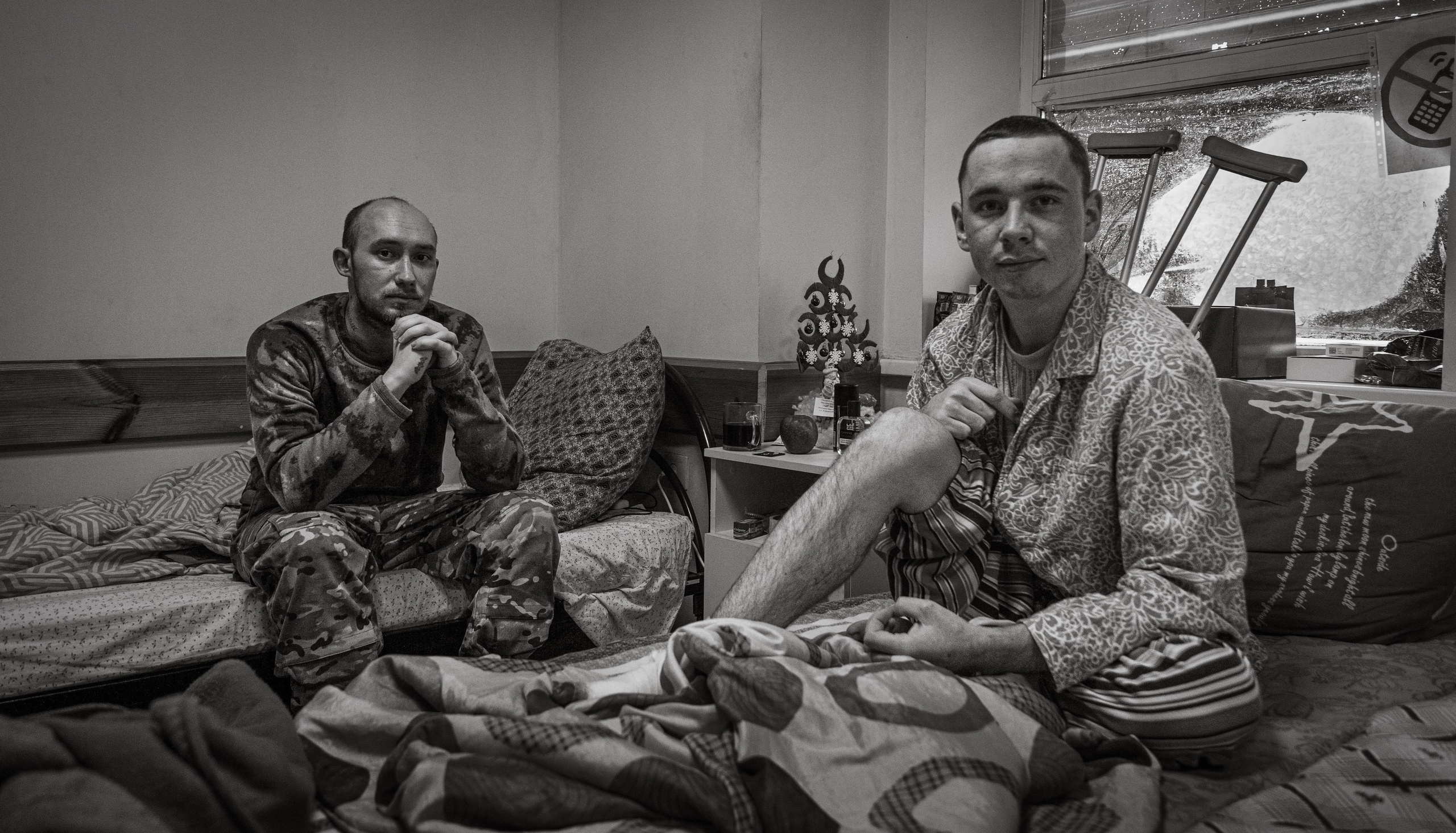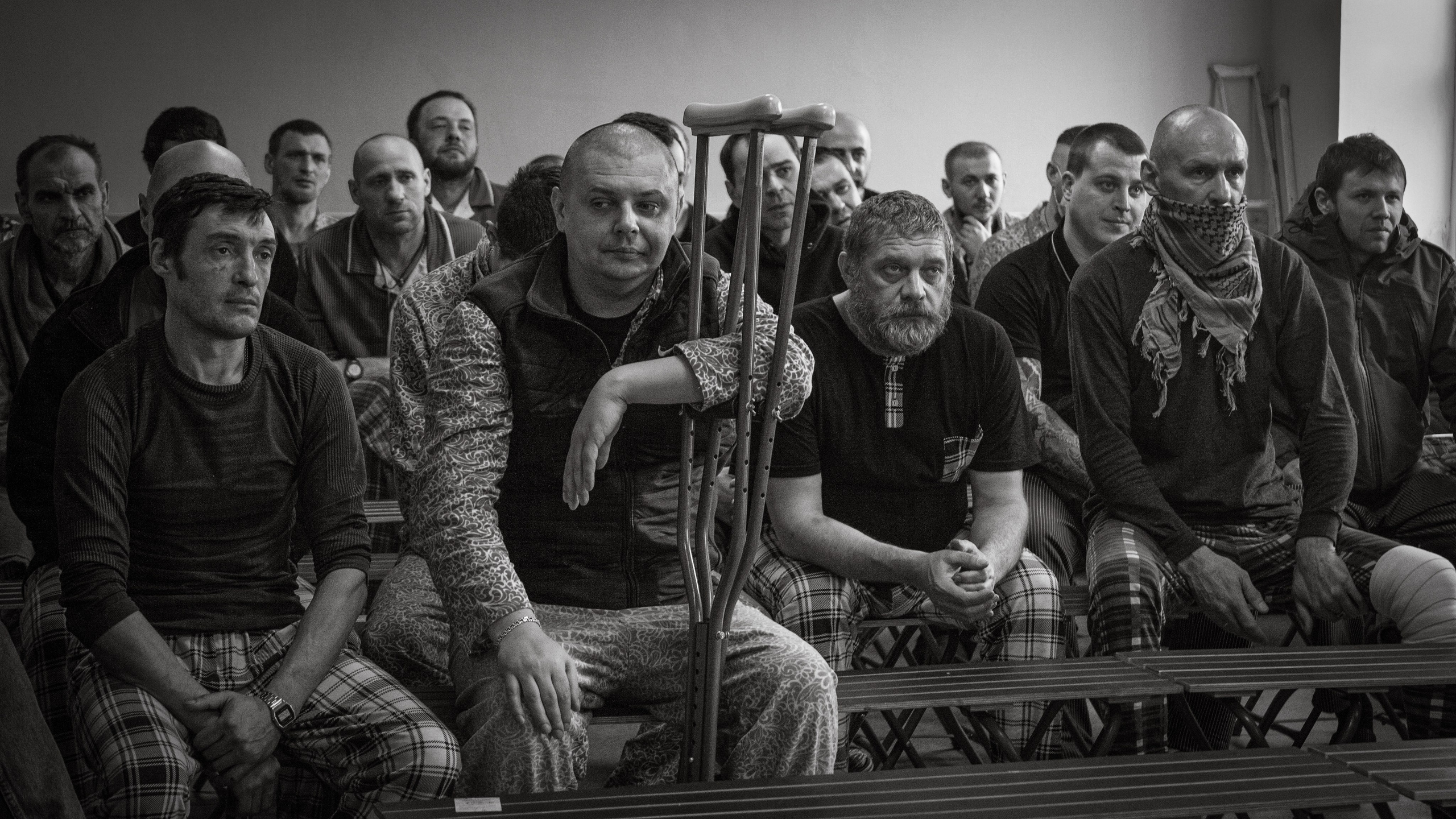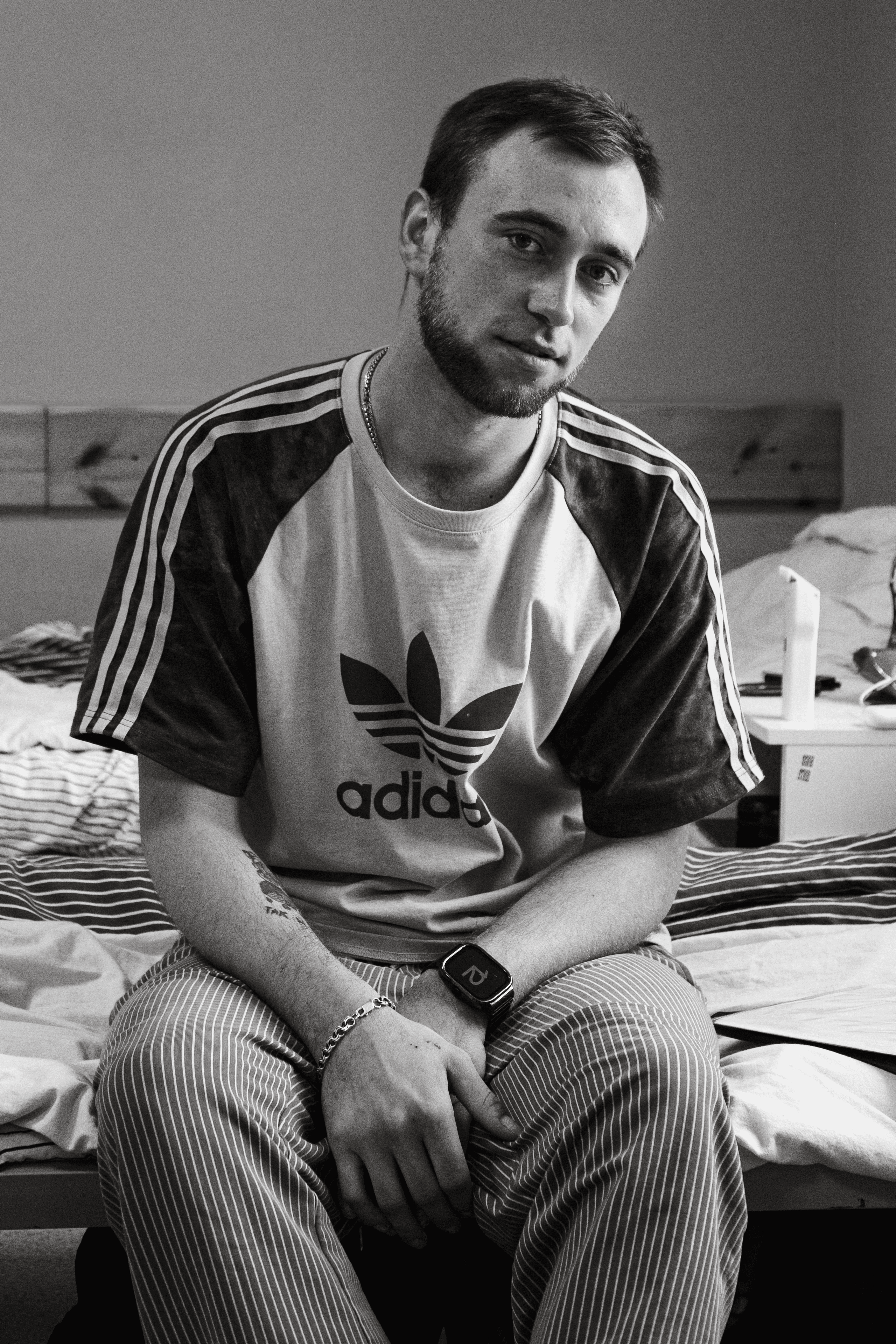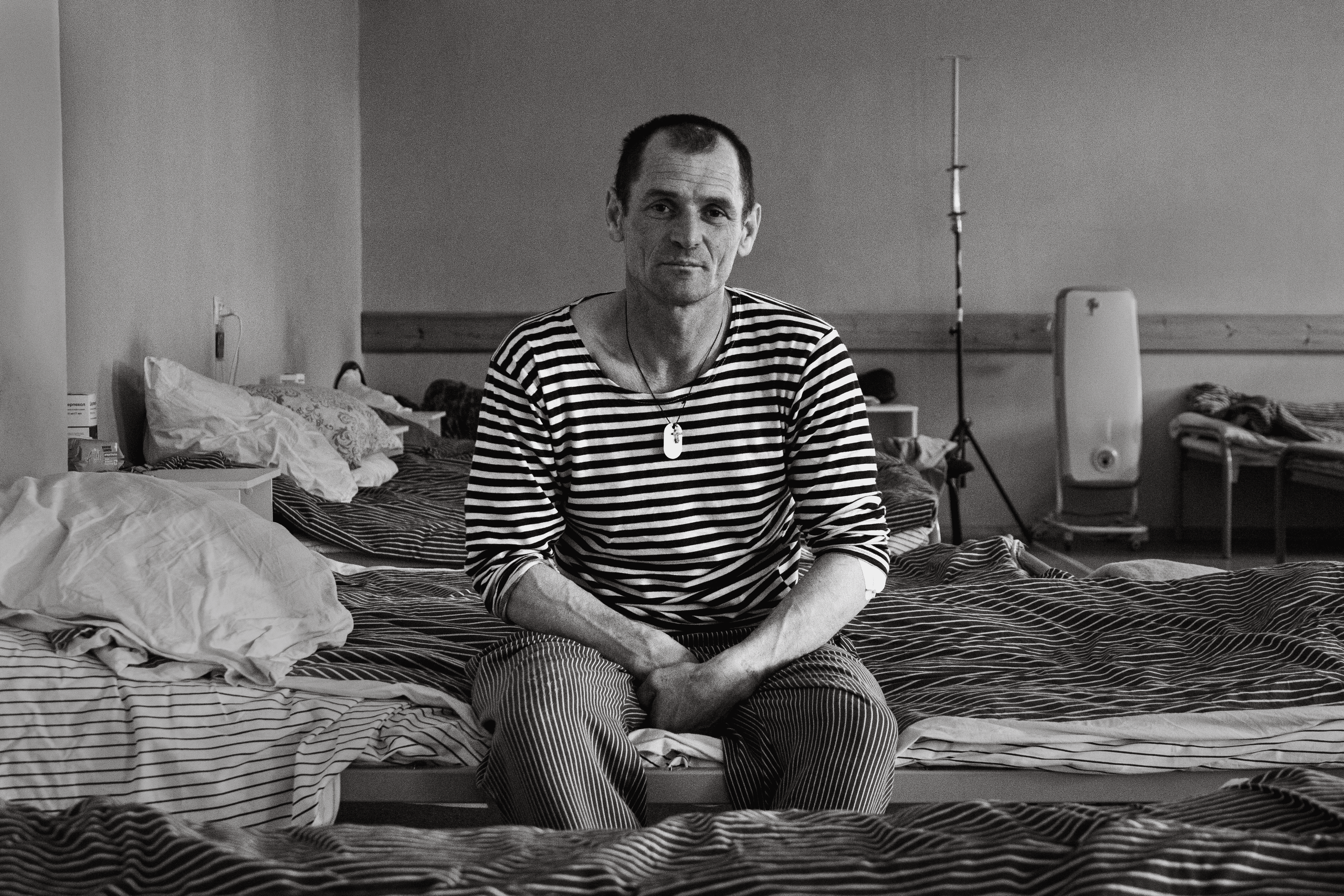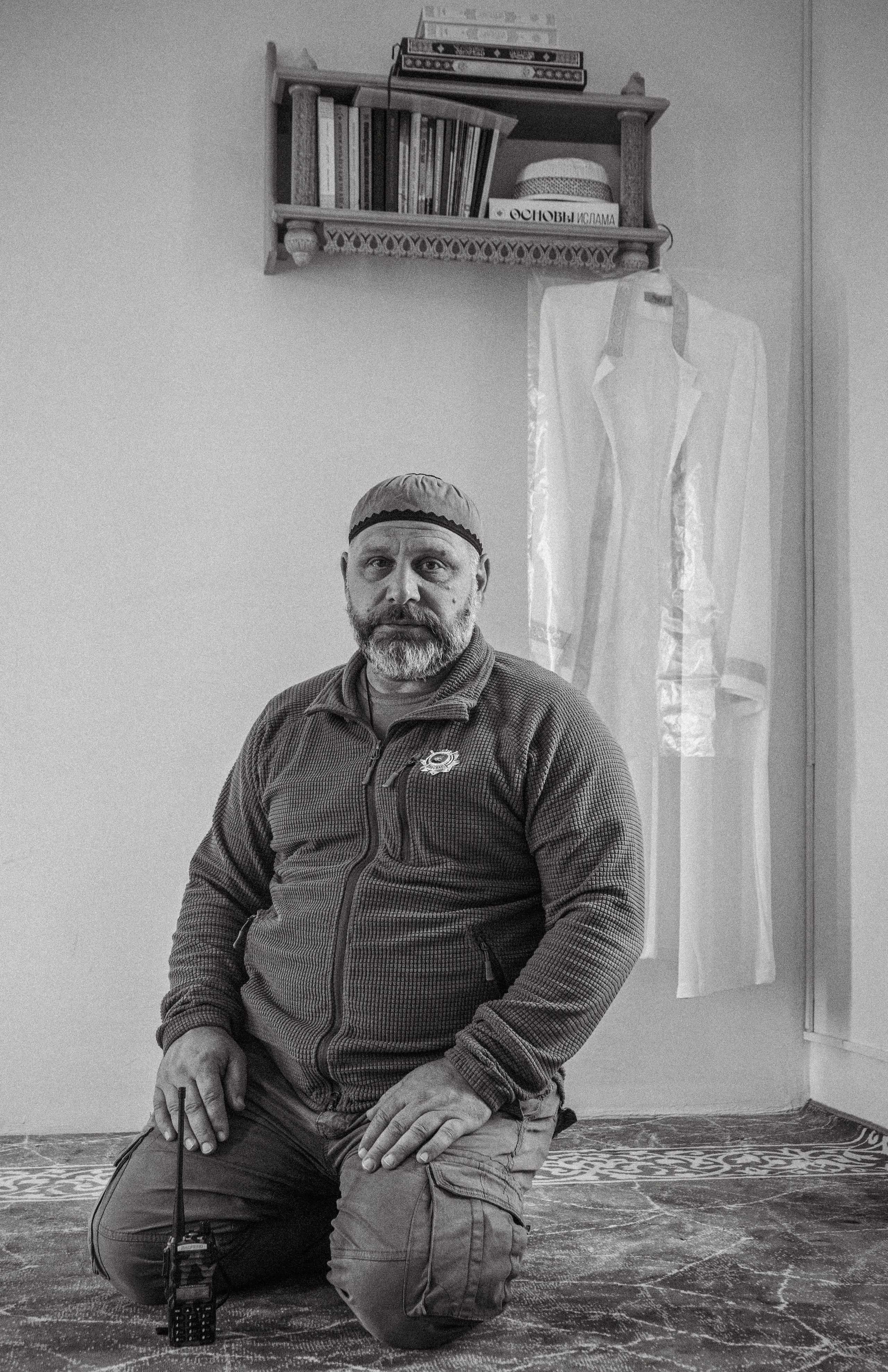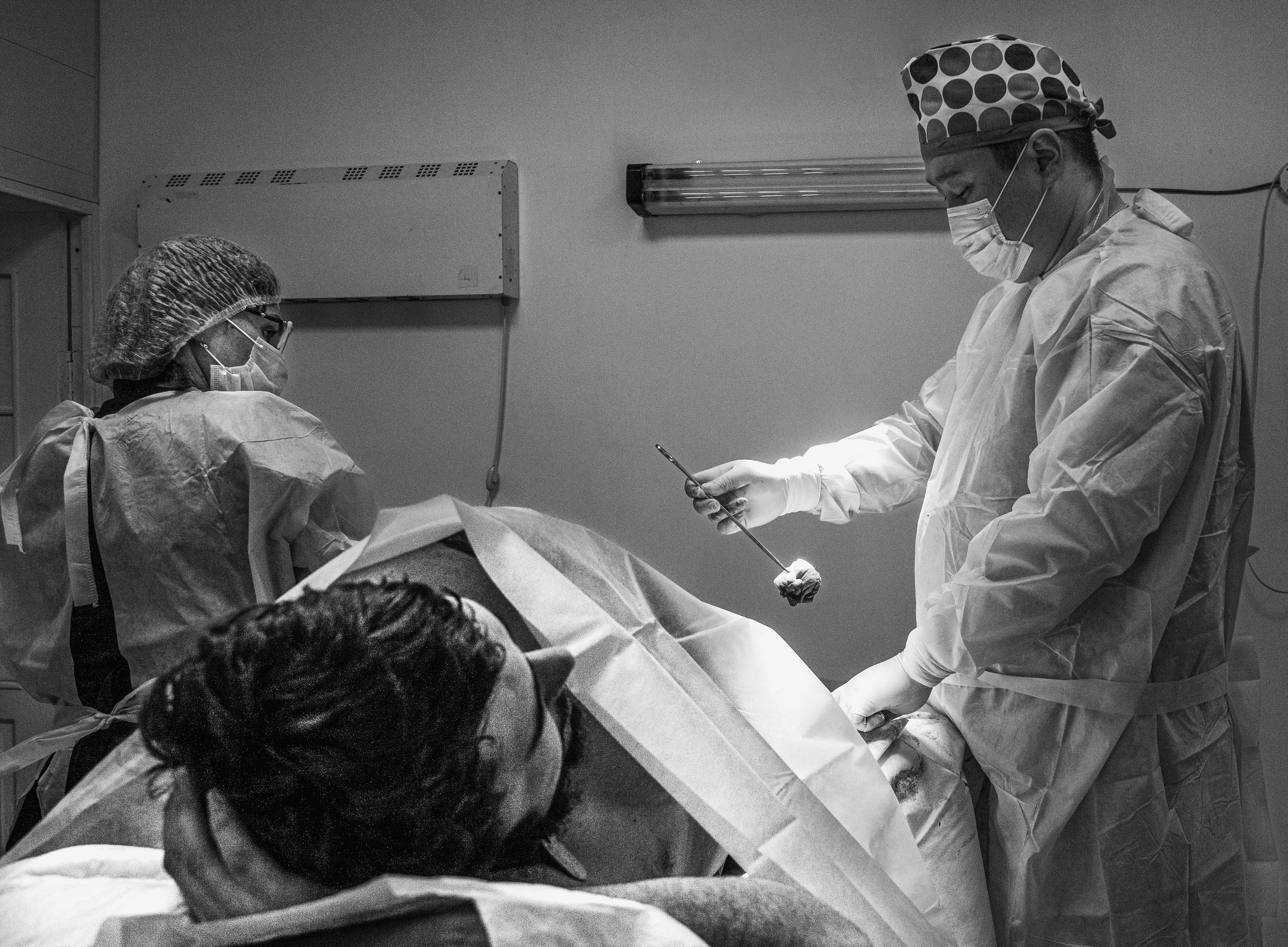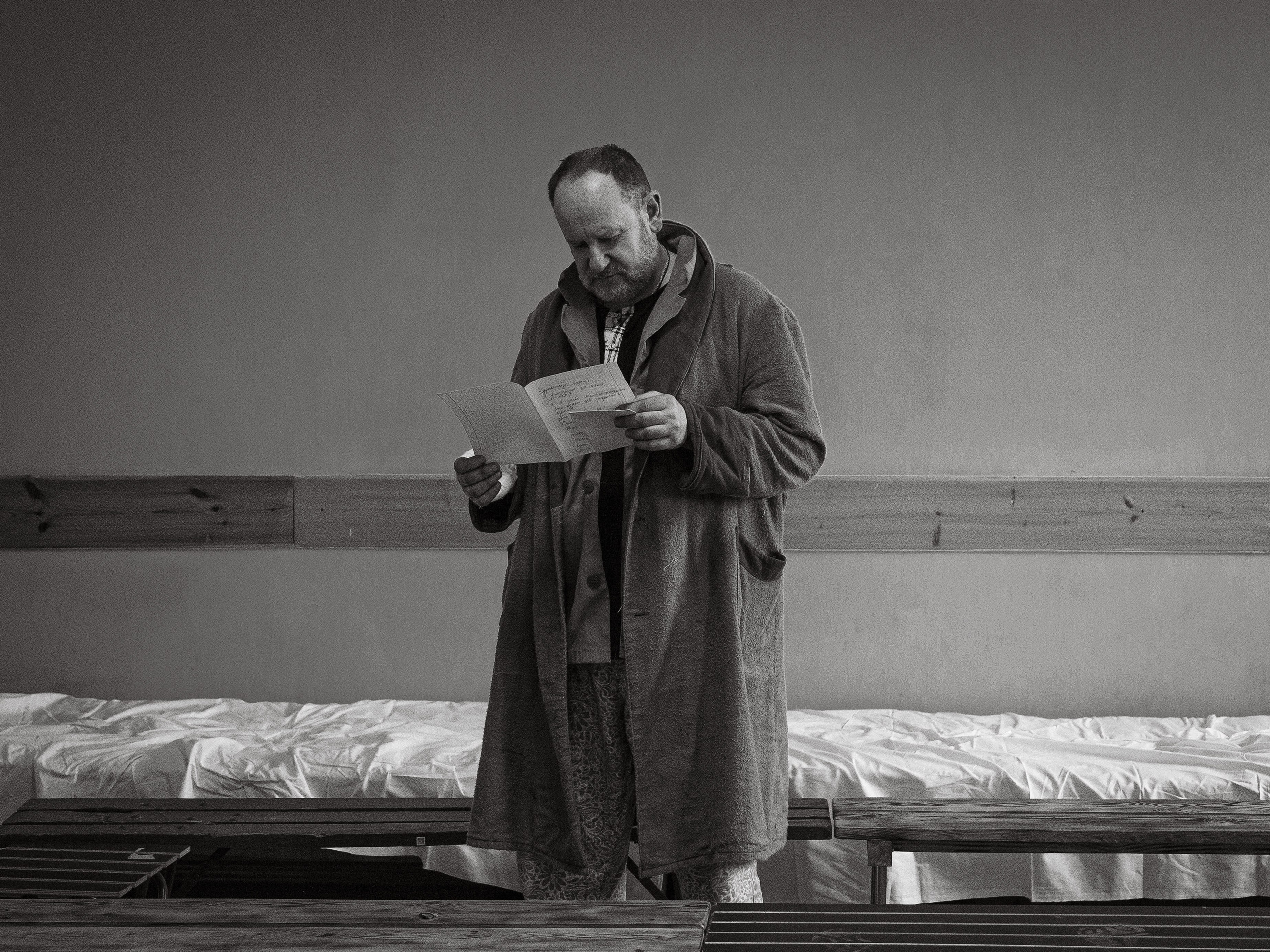Portraits of medical personnel and soldiers who are undergoing rehabilitation in frontline military hospitals in the DPR and LPR.
“Antip”
Antip worked as a children’s animator, entertaining children on an air tube in the costume of Spider-Man. He joined the army from the “B” company, which was made up of former prisoners. Today, he has been amnestied, serves on a contract, and doesn’t like to talk about his past: “I’ll upset my mother, and I’m the third and youngest son in the family.”
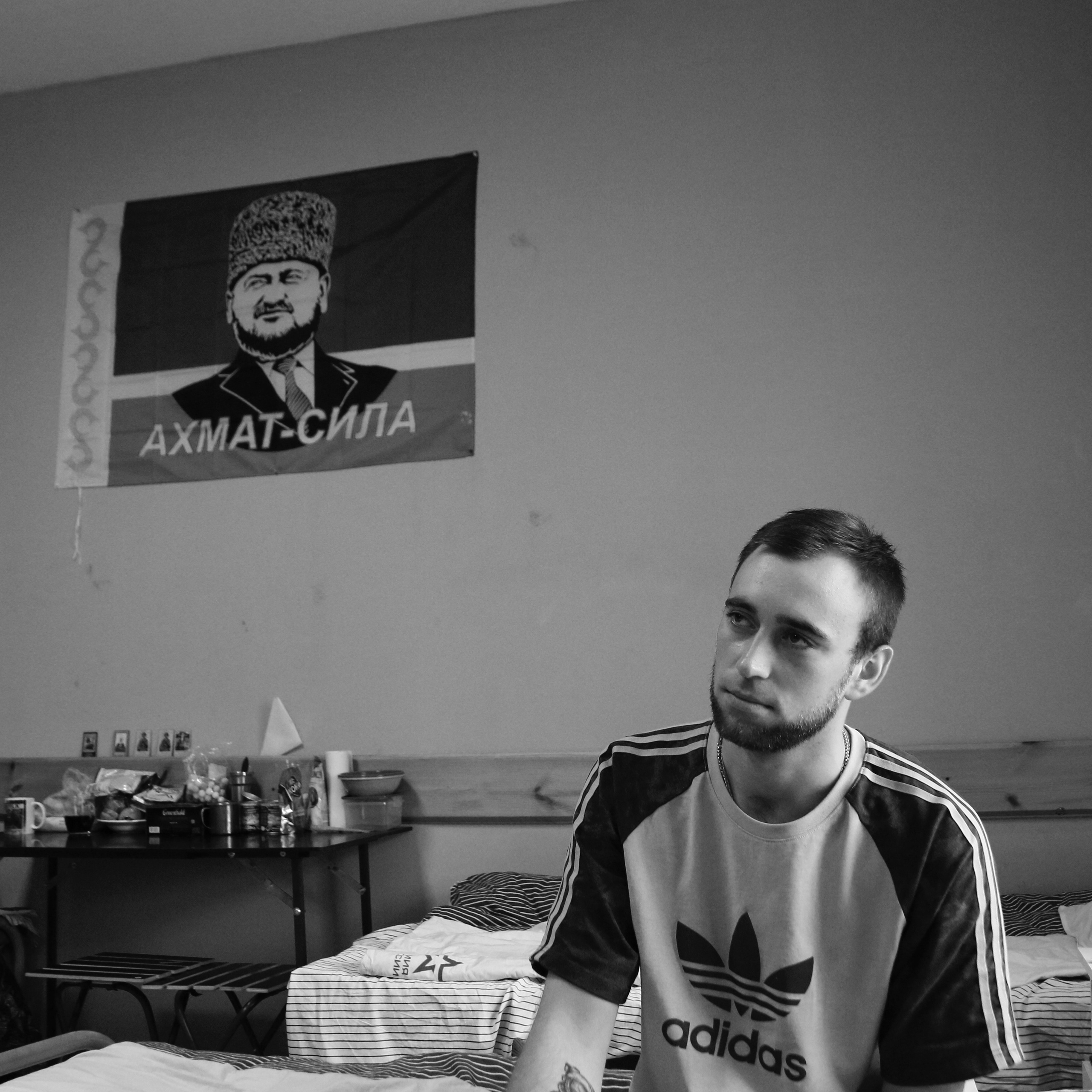
Yuri, call sign “Voroba”
Yuri, call sign “Voroba” He’s been at the front for three months. His brother was killed near Bakhmut, and he himself was wounded by shrapnel from an FPV drone when he approached his position. He was admitted to the hospital two days ago. He speaks quietly, without unnecessary words.
“Supyan” — Imam of the Special Forces Medical Service, Akhmat
— My main task is to work with military personnel, soldiers who are receiving treatment at the hospital, and to provide them with psychological and spiritual support. As you can see, the commander and head of the medical service of the Akhmat Special Forces, the 4th Brigade, the 3rd Army, with the call sign “Bula,” who created this mosque and chapel, is the one who is responsible for this. Our temple complex is a place where military personnel, regardless of their religious beliefs, can find a chapel for Orthodox Christians and a mosque for Muslims. Patients can come here to pray and socialize during their treatment. Essentially, this is a psychological service. Accordingly, there are questions that the fighters have accumulated in their personal and family lives, as well as questions that arise after combat operations and extreme situations. People have spiritual needs.
